August 3rd, 2022
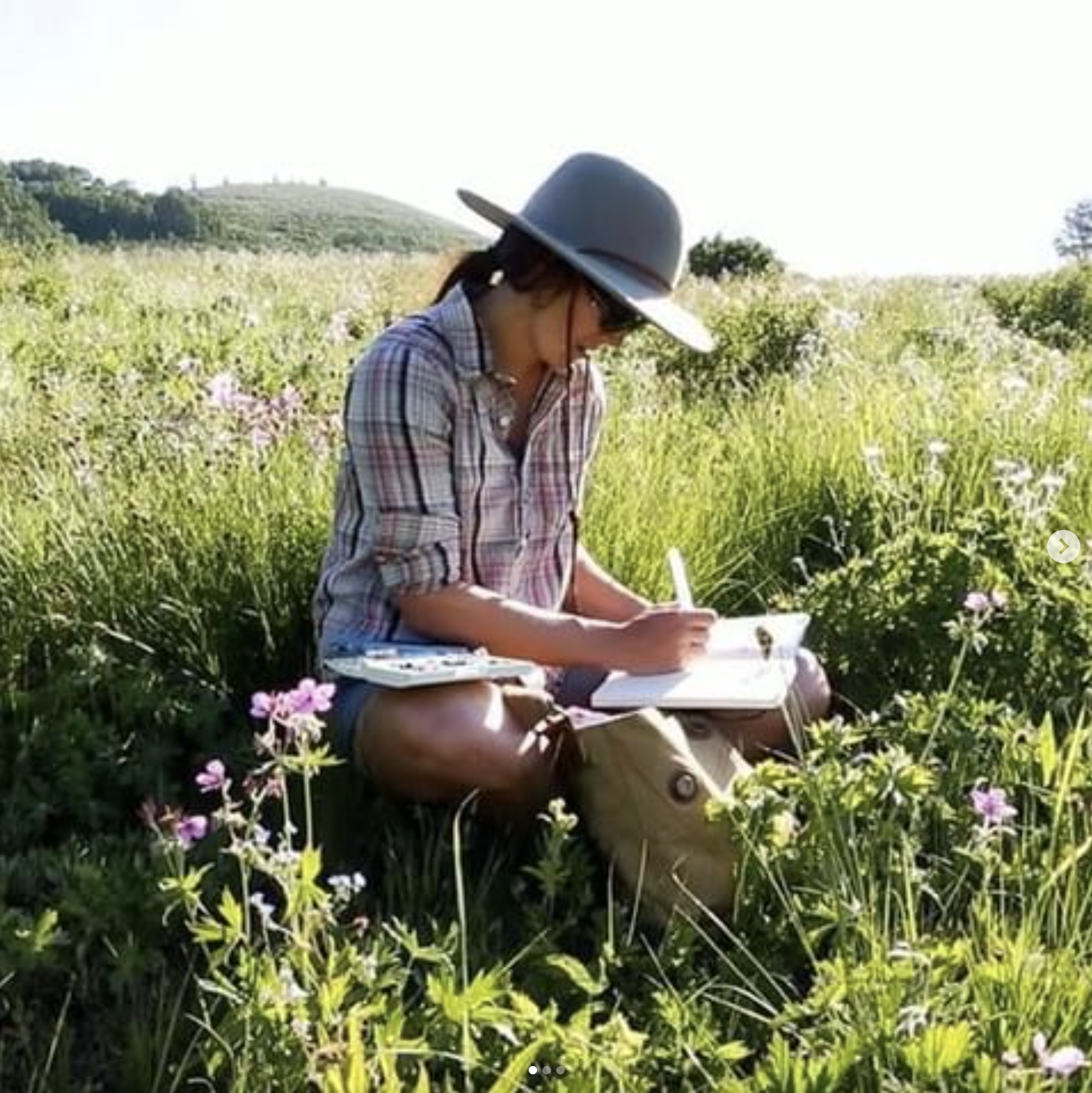
Encaustic artist Bridgette Meinhold painting en plein air in a beautiful alpine meadow. Photo by Claire Wiley
Oh, summer in the mountains! When the trees are full, the flowers are blooming, and the magpies are crowing overhead. Here in the Alpine mountains of the Wasatch and Uintas, summer is in full swing and the pull to spend as many daylight hours outside as possible is stronger than ever.
That draw towards nature, especially in the summer, is felt by our Gallery MAR artists as well. Many of our artists’ work is inspired by the great outdoors, and some even find ways to create while adventuring outside. After months of working exclusively in the studio, summertime enables a welcome change to our artists’ creative schedules by offering warm temperatures and lush, beautiful views in which to paint.
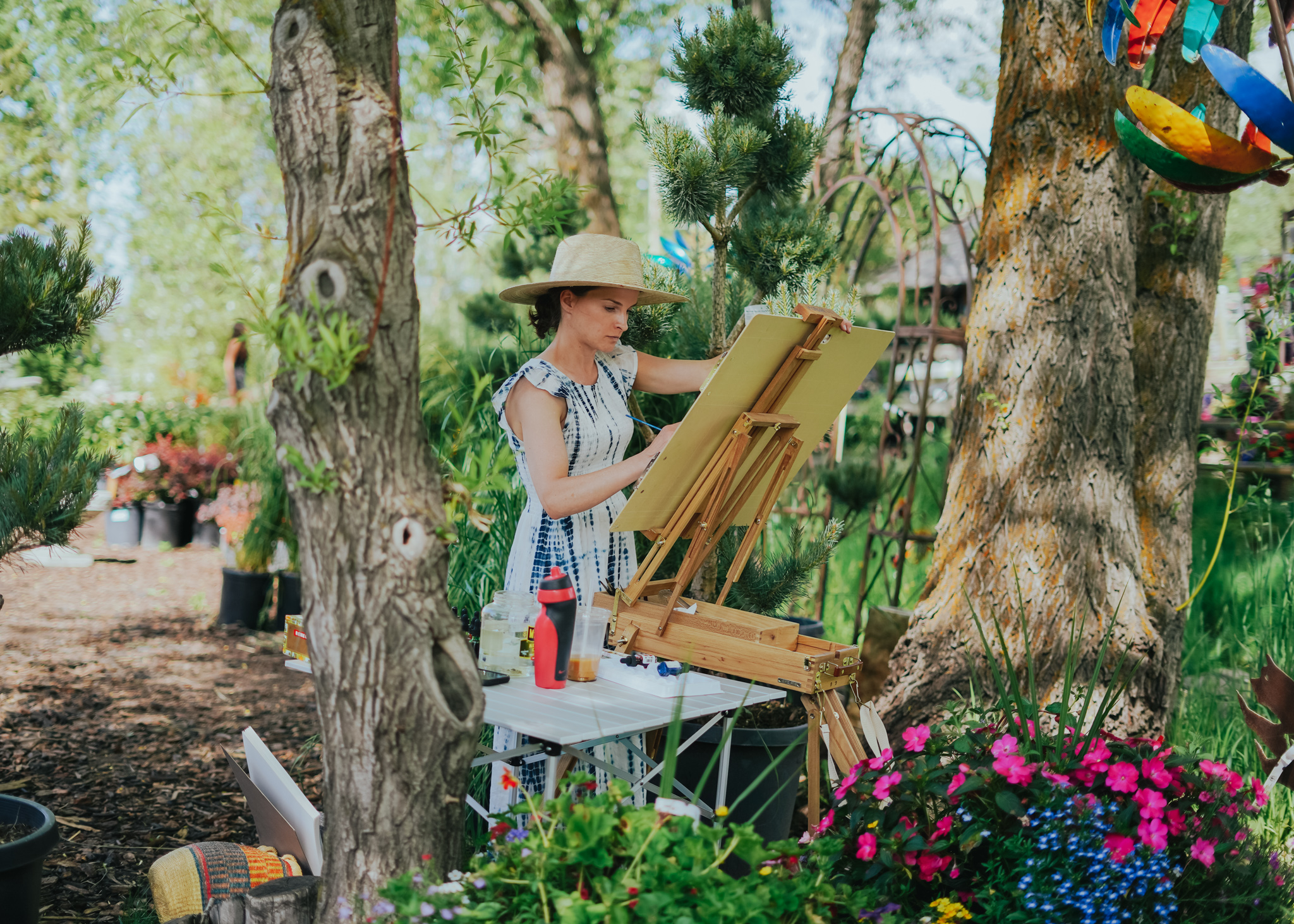
Our First Place awardee, Morgan McCune, at the Park City Gardens Plein Air event
Painting outdoors is what we in the art world refer to as painting en plein air, translated from French as “in the open air.” This approach to art creation was first developed by artist John Constable in 1813, and popularized later in the century when paint tubes were invented (before then, artists had to grind each of their painting pigments by hand, making portability too much of a challenge).
Many of our most beloved painters throughout art history were renowned for their plein air painting. When we think of Impressionists like Monet or Renoir, we imagine them outdoors, sitting under a parasol in an open field or in front of a lily pad pond, capturing the ever changing light of the landscape as the day passes.
Painting outside enables a true, deep connection to nature. What we surround ourselves with cannot happen but seep into our work, no matter what kind of work we do. It only makes sense that painting when surrounded by summer splendor infuses the true spirit of nature into our artists’ work.
In honor of summer, we asked several of our Gallery MAR artists about their experiences painting en plein air and how it differs from their studio sessions:
Bridgette Meinhold
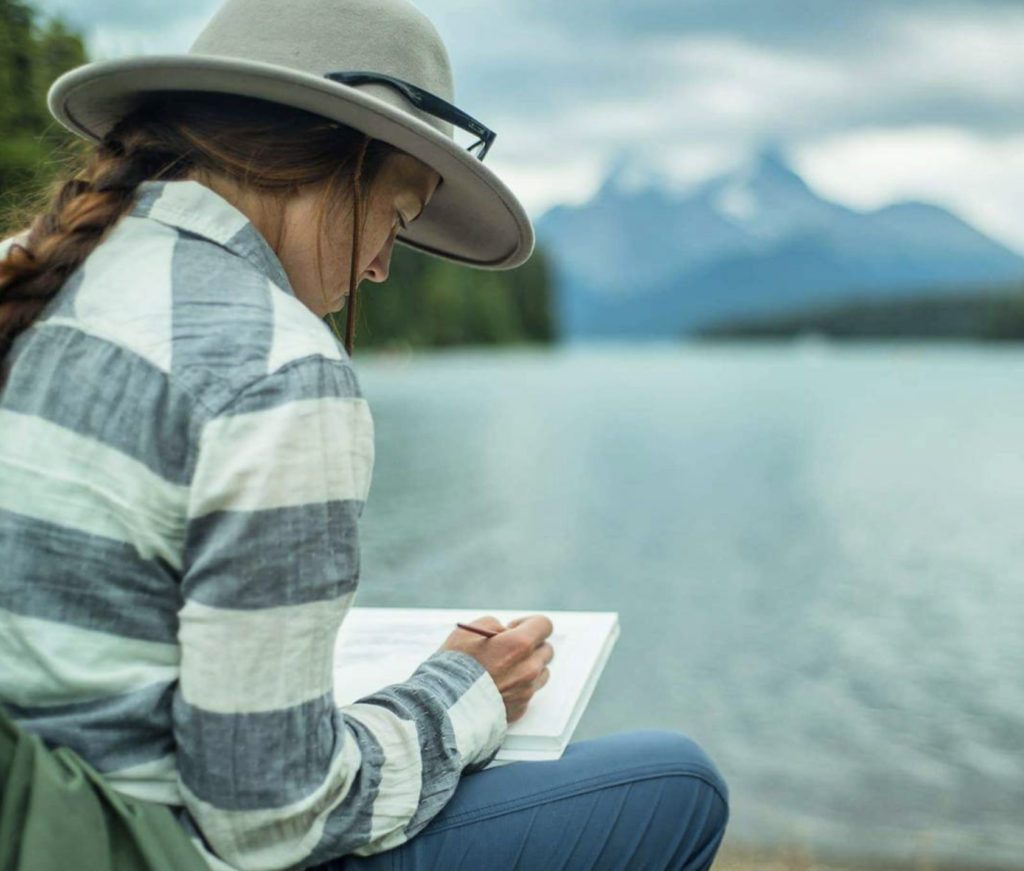
Bridgette Meinhold sketching en plein air in front of a beautiful mountain lake landscape. Photo by legendeer
What I love most about plein air painting is spending time outside observing nature. Painting gives me a lens to view nature through, allowing me to focus on a particular element that draws my attention or a way to spend time with something that I want to understand better. Basically it’s just focused time spent outdoors.
Plein air painting is challenging in many ways — the conditions change rapidly, light and shadow move constantly, you have to battle the wind, bugs, and the sun. So it is definitely more difficult than painting in the studio, where you can control the conditions. It can also be overwhelming because you are out in a beautiful landscape trying to appreciate it fully, but if you try and paint the whole scene, you’ll never get through it all. So you have to hone in, curate, and limit yourself to try and paint something in a reasonable amount of time.
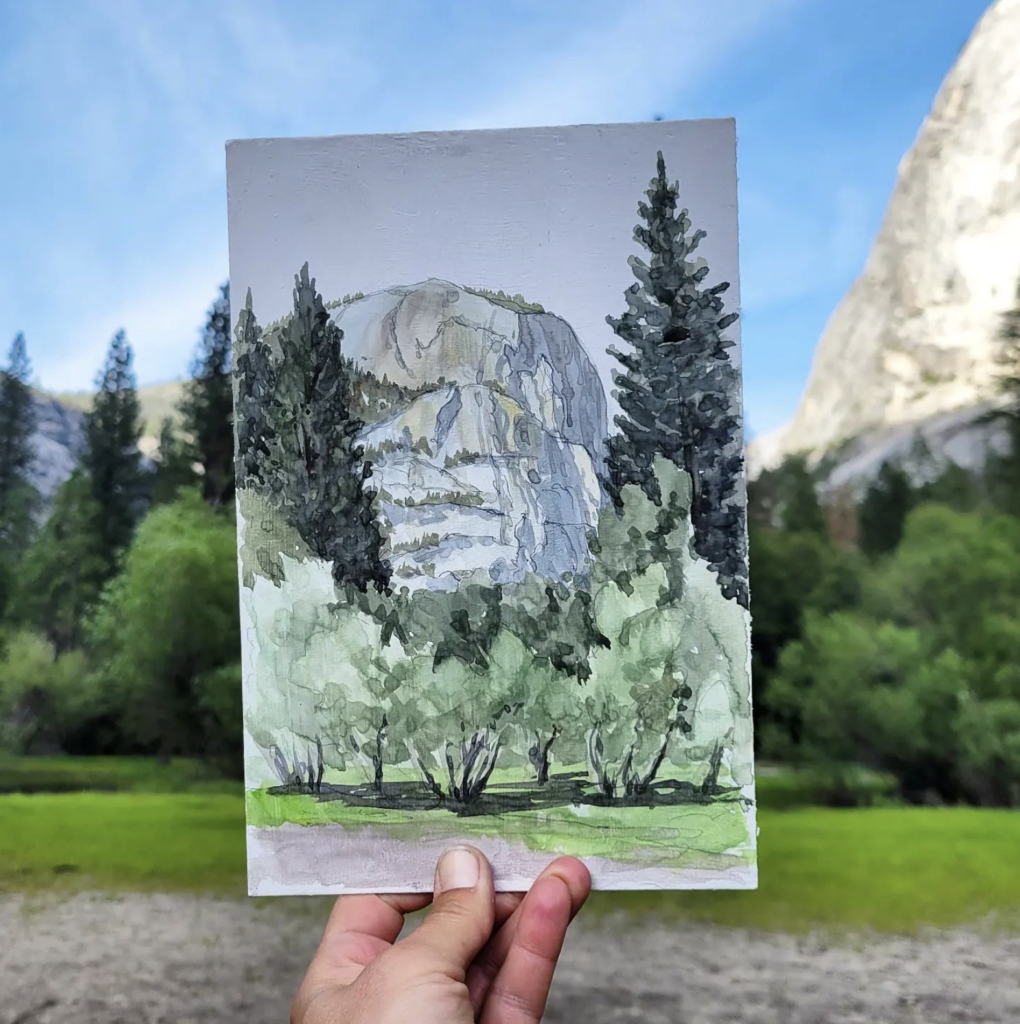
A watercolor painting from one of Bridgette Meinhold’s latest plein air adventures: her watercolor teaching class with the Yosemite Conservancy in Yosemite National Park
But at the same time, observing nature rather than looking at photos of it is vastly different. For instance, a photo often doesn’t have the kind of detail to help me understand the way a mountain is formed or where the ridges and the valleys are. Being there in person, my eyes can more easily see the way the landscape is built, which gives me a better understanding of the location and in theory, should make for a better painting.
The goal though for me while plein air painting is not to create a masterpiece. It is simply to spend time outdoors doing an activity I enjoy. If I end up with a decent painting, all the better, but I don’t worry too much about the outcome.
Michael Kessler
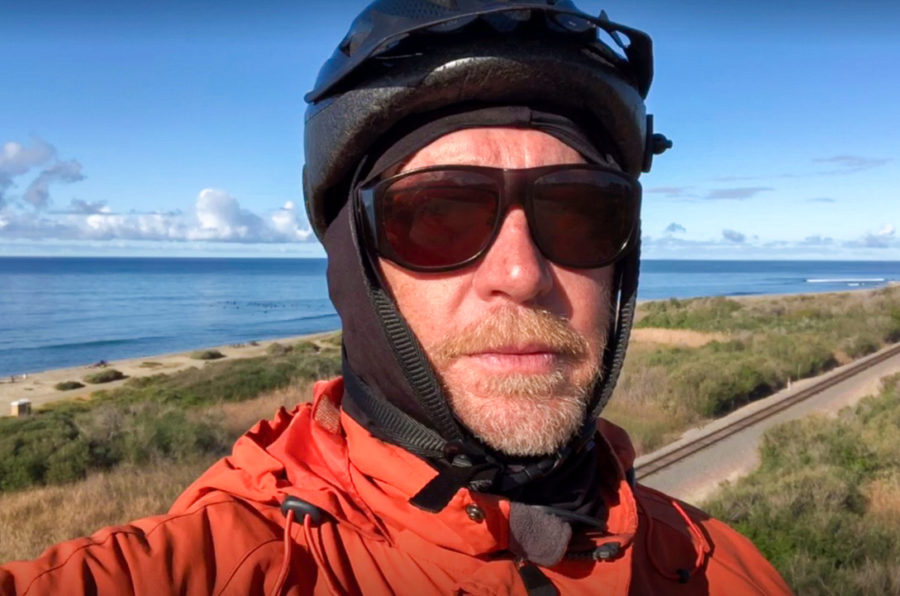
Mixed media artist Michael Kessler biking on one of his inspiring camper adventures
“When I travel it’s usually in my Tacoma pickup truck, which has a camper on the back. In the camper, there’s a sink where I often put my sketchbook and allow my wash drawings to dry while I hike or bike or fly fish.
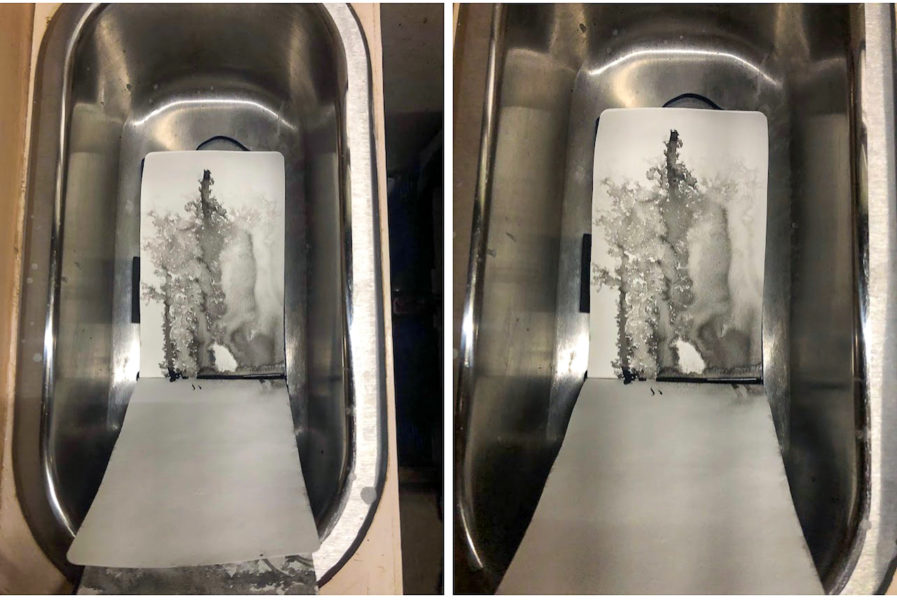
Watercolor Studies drying in the sink in Michael Kessler’s camper
When I’m out enjoying the outdoors with activities that are health-promoting, I’m extremely observant, and I use those observations to make washed drawings in my sketchbook. Sometimes if I’m near a lake or the ocean, I’ll dip the paper into that water and collect containers of that water and use it to suspend my inks or watercolors.
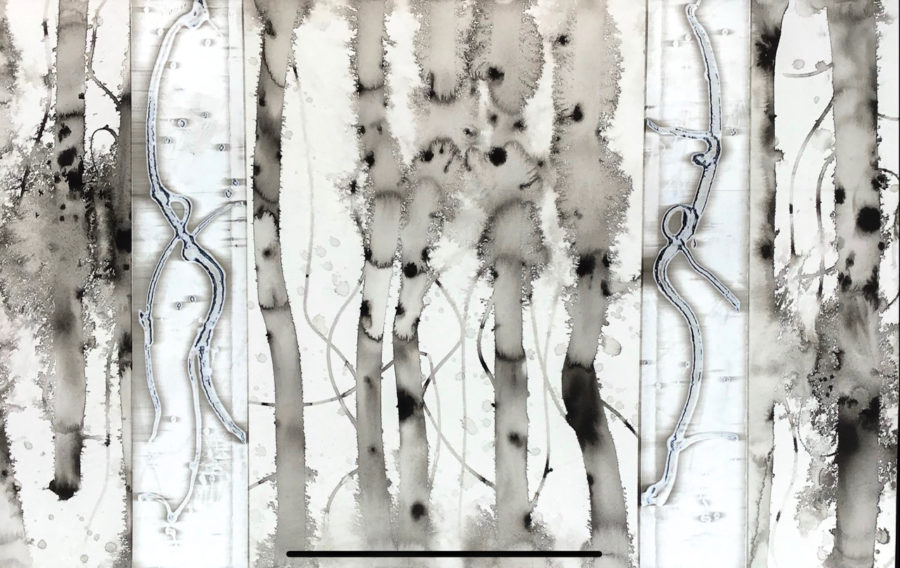
A wash drawing by Michael Kessler inspired by his experiences in nature
I produce stacks and stacks of these wash drawings on paper which later get collaged or mounted onto canvas or panels and become part of a more formal painting, which then get exhibited and sold at galleries.
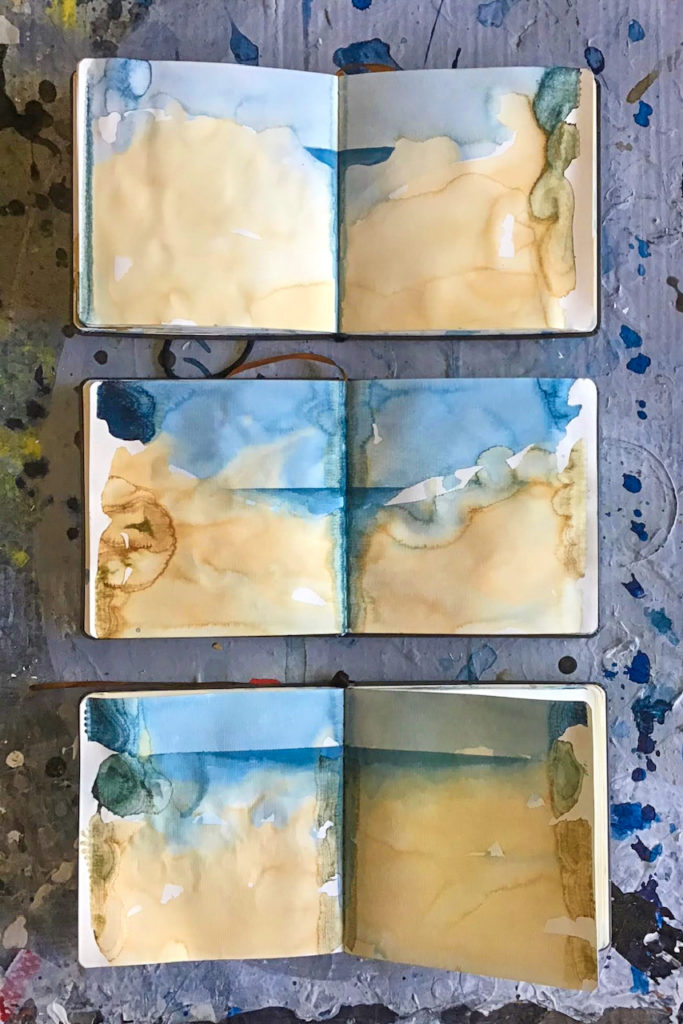
Stacks of wash drawings to later by used in Michael Kessler’s large scale paintings
Everything is inextricably linked: all of my activities feed into one another and support one another so that everything makes sense.”
Shawna Moore
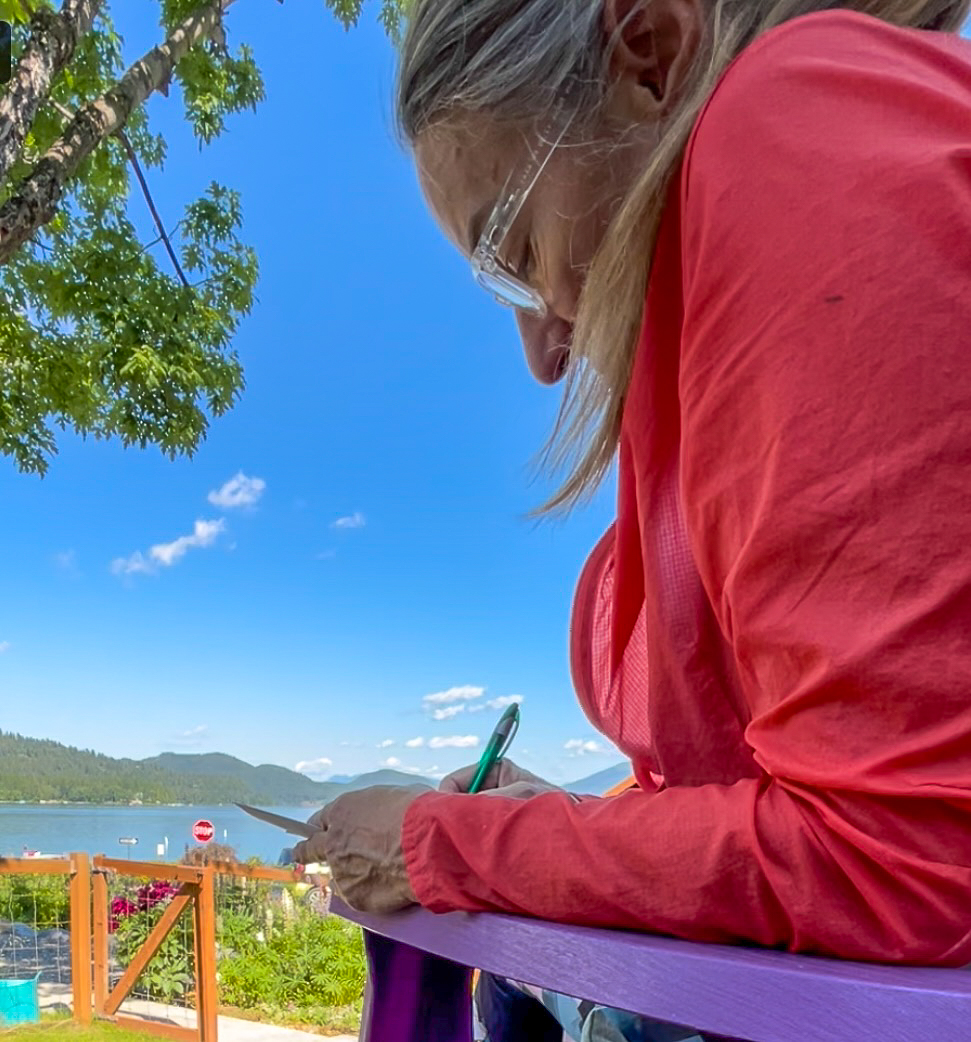
Artist Shawna Moore sketching movement patterns on water at her home on Whitefish Lake
“When I work outside or use natural visual references, I am aiming to capture something beyond myself. The energy of nature and the colors just can’t be beat.
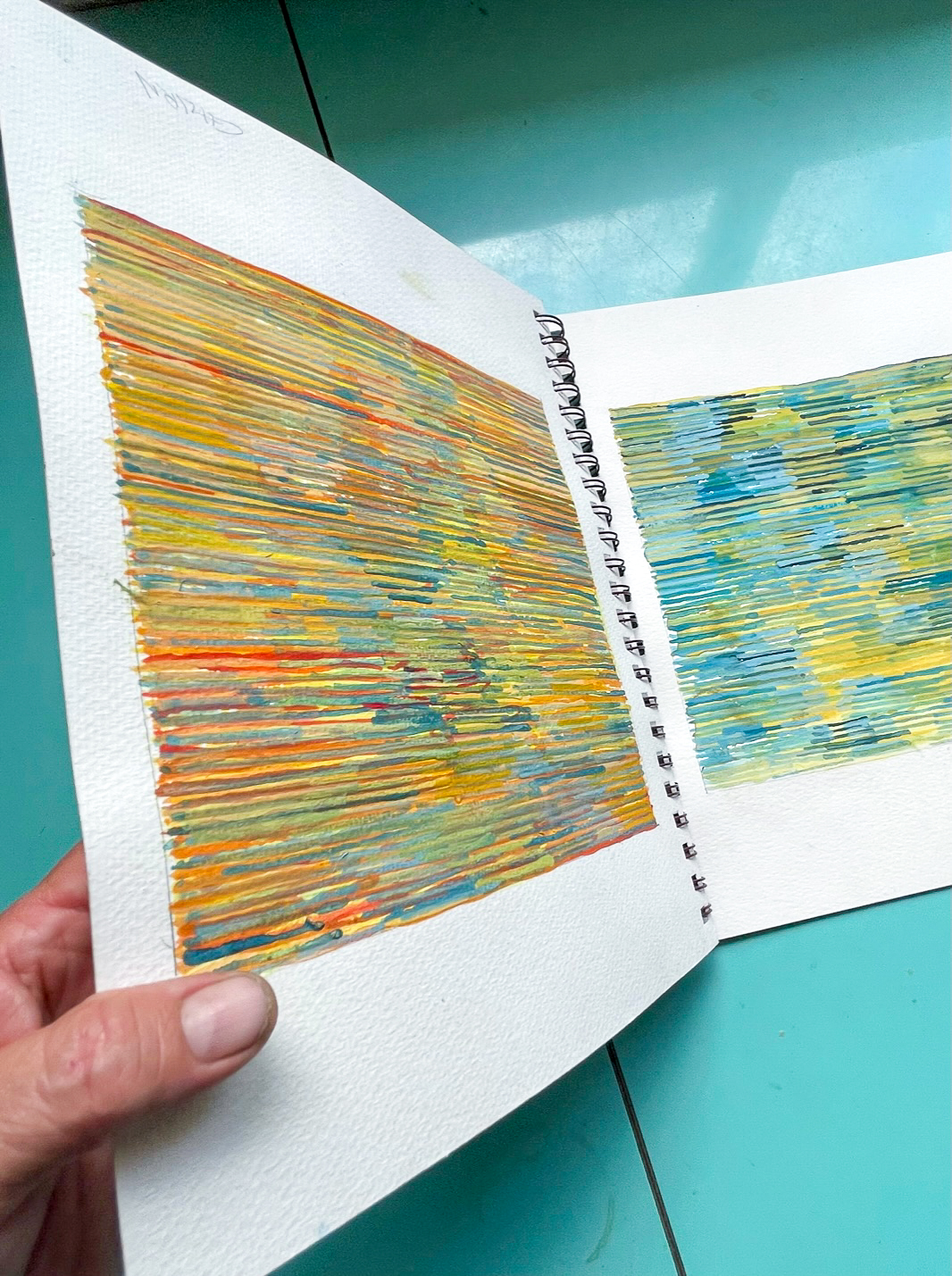
A few pages out of Shawna Moore’s latest travel sketchbooks
It is both the curse and salvation of painting outdoors that makes it of such benefit. You are constricted by the framework of a sketchbook or small canvas. That helps but also limits to how big you can paint and what can be captured. I believe it a a great way to condense a place, mood or set of colors. It is very freeing.”
Matt Flint
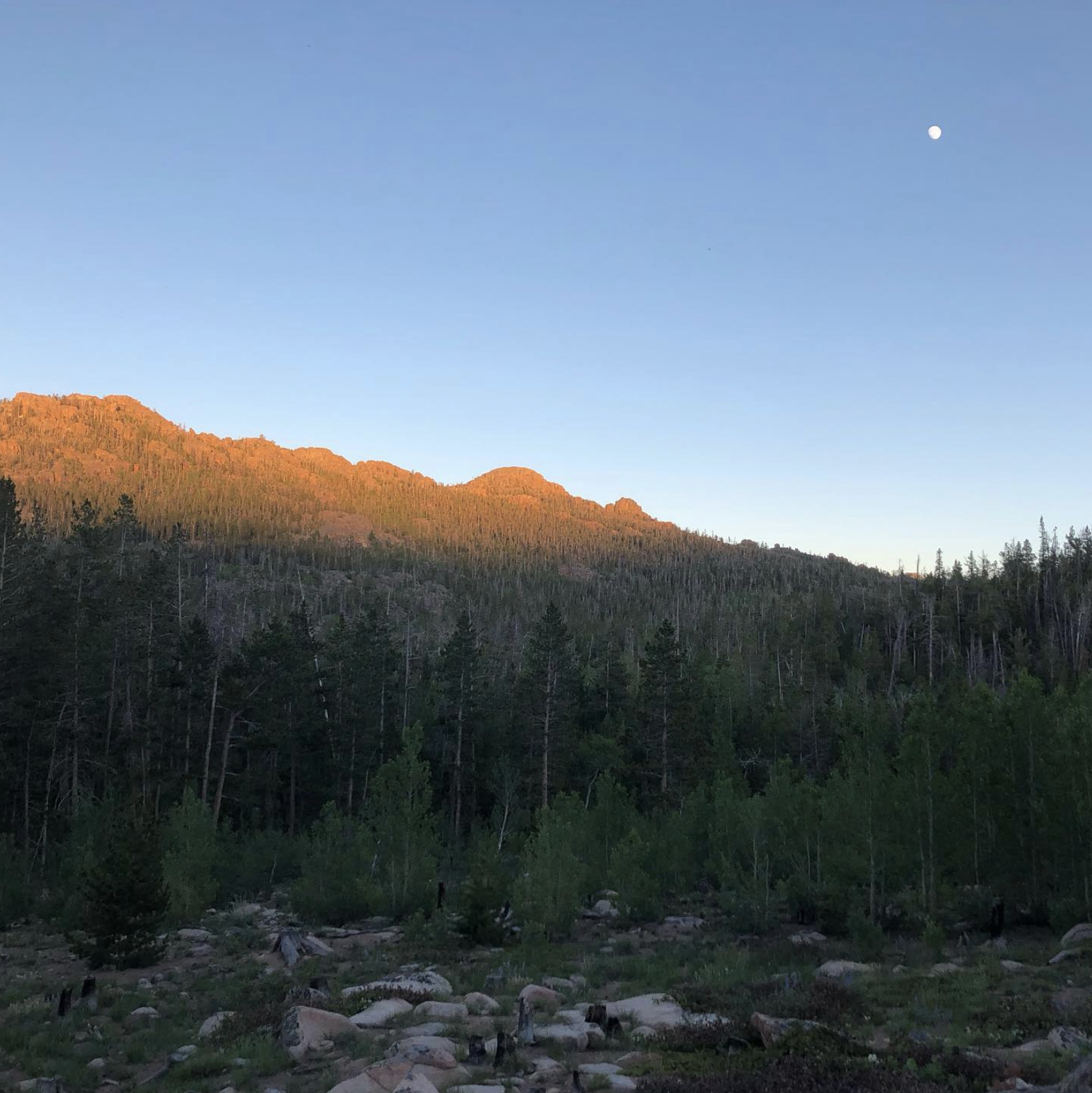
A sunset photo from artist Matt Flint on one of his walks through nature near his beautiful home in Wyoming
“First of all, I love to be outside. When I am mountain biking, hiking, skiing, etc., I am always rolling some ideas about art-making around in my mind. It may be cliché, but nature is where the answers are. I primarily sketch and use water-based media in a sketchbook when I am working outside.
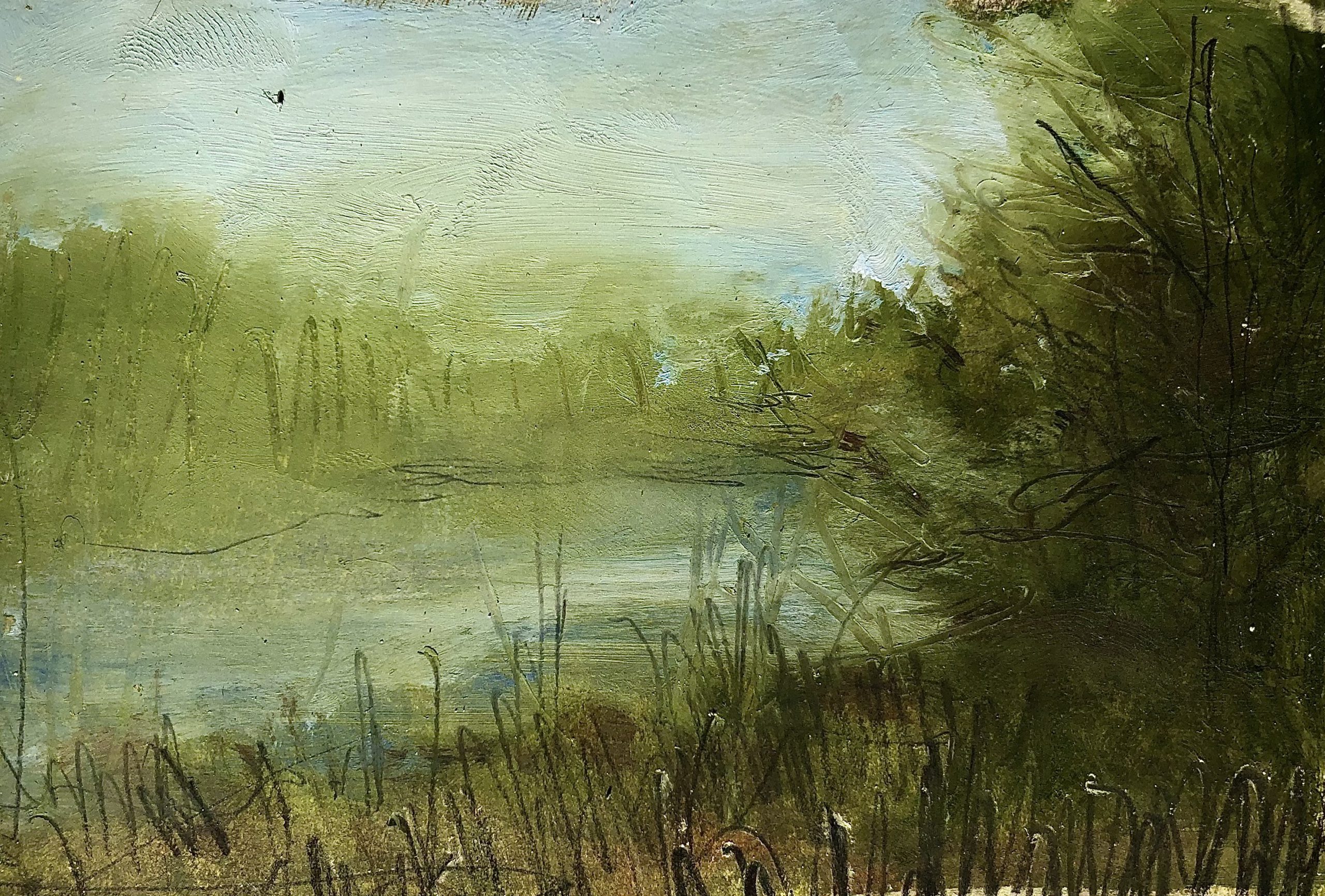
“Here is a little sketchbook study I did in the Windriver Mountains. It even has a small insect stuck to it in the upper left hand corner.” – Matt Flint
For me, the most challenging aspect of working outside is focusing on just the view or idea I am trying to capture. If I start to look around too much, I get lost in another area of beautiful possibility.”
Written by Veronica Vale
 Carving the Canvas: Ski Season Through the Eyes of Our Artists
Carving the Canvas: Ski Season Through the Eyes of Our Artists Picture This: Horsepower
Picture This: Horsepower Horsepower: The Timeless Allure of Equine Art at Gallery MAR
Horsepower: The Timeless Allure of Equine Art at Gallery MAR